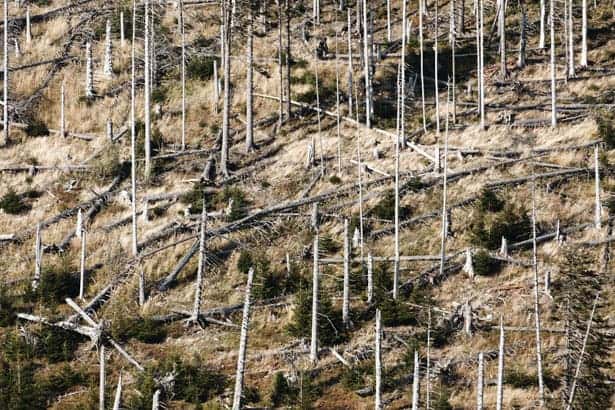In the wake of calamities like hurricanes or tornadoes, you’ll find trees leveled to the ground. When Hurricane Sandy hit the East coast in 2012, it made a hell of a lot of trouble causing trees to topple or brake, killing or injuring people and animals, crashing into homes and cars, blocking roads and ripping down power lines. In New York City alone, 8,497 trees fell in the hurricane’s onslaught. In the face of such powerful forces of nature, seeing scores of broken trees isn’t odd in itself. What’s striking though is that even during less severe wind gusts, many noticed that trees are brought down regardless of their size, shape, diameter or species. Data collected from storms suggests the critical wind speed at which trees break is constant — about 42 meters per second. Spurred by this oddity, French researchers modeled trees at the mercy of a storm too find out why exactly this happens.
Various wooden rods were tested and weights were applied to record the force required to break the rods. For a fixed length, the diameter made the rods stronger as expected. But trees grow in diameter proportionally with height, in most cases. Using Hooke’s law, Griffith’s criterion, and tree allometry (the relationship of tree size parameter like diameter and height — the feedback loops), the researchers came up with a mathematical equation that explained why almost all trees seem to break at the same wind speed.
Changing parameters like its height, diameter or species did little to affect the outcome. If you double the size of a tree, the required wind speed increases by 9%. Some species are more resilient and can withstand bending stress better. Oak, for instance, breaks at a speed 10% higher than pine. Overall, though, the outcome doesn’t change significantly and at 50 m/s absolutely all trees should break.
The researchers note that this is likely an optimization nature evolved to save resources given winds so powerful (enough to turn any object into a projectile!) are rare. The same mathematical relationship might explain how coral and sedimentary organisms grow in water currents, according to David Schultz who writes for Science.










